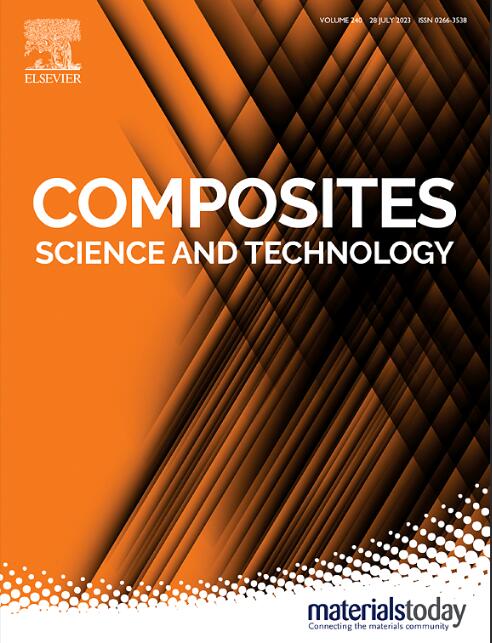Multiscale enhancements in Z-pin reinforcement performance through curing parameters
IF 8.3
1区 材料科学
Q1 MATERIALS SCIENCE, COMPOSITES
引用次数: 0
Abstract
Z-pinning is employed by composite laminates to enhance interlaminar performances. Z-pinned composites are then cured to obtain a vastly enhanced interlaminar fracture toughness. However, rare research has focused on the curing effects on the mechanical performances of Z-pinned laminates. This paper presents a multiscale experimental and simulation investigation of the curing effects on the individual Z-pin bridging behaviors and the mode Ⅰ interlaminar fracture of multi-pinned laminates by changing holding temperatures and times of cure. The results reveal that a low holding temperature for a long time decreases the cure-induced Z-pin/composite interfacial cracks, thus generating larger Z-pin energy dissipation and a better specimen's load-carrying capacity. Compared with 403 K for 150 min, the Z-pin energy dissipation and interlaminar fracture toughness increased by 32.22 % and 38.82 % by holding at 383 K for 200 min. Mesoscale and macroscale models were developed to predict the cure-induced Z-pin interfacial conditions, Z-pin bridging behaviors, and reinforcement efficiency. Combining the experiments and numerical illustration, this paper presents the possibility of optimizing the Z-pinning performances through the curing profiles.

固化参数对z针增强性能的多尺度影响
复合材料层合板采用z形钉钉技术来提高层间性能。然后对z -钉接复合材料进行固化,以获得大大增强的层间断裂韧性。然而,关于固化对z -钉合板力学性能影响的研究很少。本文通过多尺度实验和模拟研究了不同保温温度和固化次数对多钉层合板的Z-pin桥接行为和Ⅰ层间断裂模式的影响。结果表明,长时间低温保温可以降低Z-pin/复合材料界面的固化裂纹,从而产生更大的Z-pin能量耗散和更好的试样承载能力。与403 K保温150 min相比,383 K保温200 min后,Z-pin的能量耗散和层间断裂韧性分别提高了32.22%和38.82%。建立了中尺度和宏观模型来预测Z-pin的固化界面条件、Z-pin的桥接行为和增强效率。结合实验和数值说明,提出了通过固化型态优化z形钉钉性能的可能性。
本文章由计算机程序翻译,如有差异,请以英文原文为准。
求助全文
约1分钟内获得全文
求助全文
来源期刊

Composites Science and Technology
工程技术-材料科学:复合
CiteScore
16.20
自引率
9.90%
发文量
611
审稿时长
33 days
期刊介绍:
Composites Science and Technology publishes refereed original articles on the fundamental and applied science of engineering composites. The focus of this journal is on polymeric matrix composites with reinforcements/fillers ranging from nano- to macro-scale. CSTE encourages manuscripts reporting unique, innovative contributions to the physics, chemistry, materials science and applied mechanics aspects of advanced composites.
Besides traditional fiber reinforced composites, novel composites with significant potential for engineering applications are encouraged.
 求助内容:
求助内容: 应助结果提醒方式:
应助结果提醒方式:


